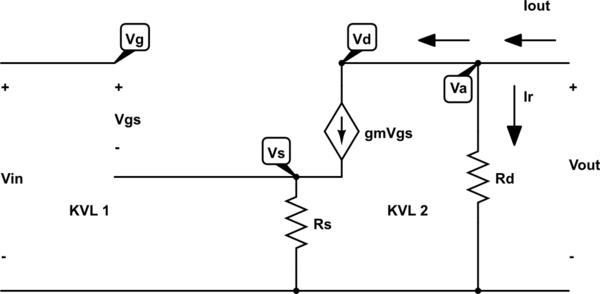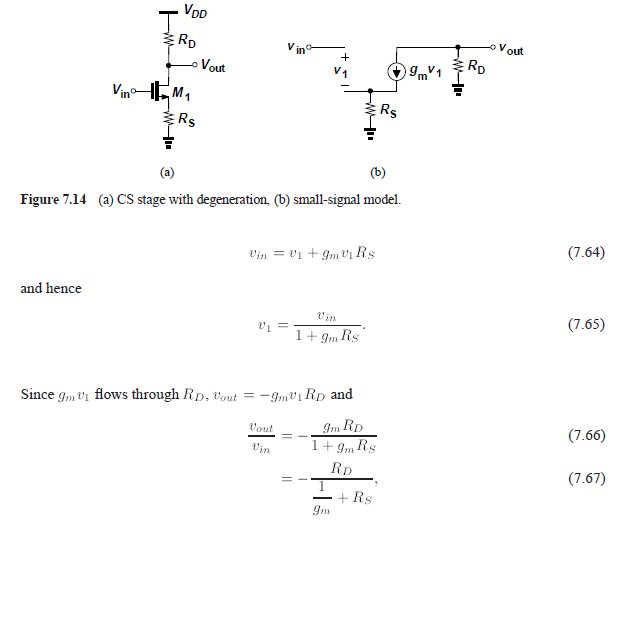I want to find the gain in this MOSFET small-signal model.
KVL in loop 1:
\$+V_{in}-V_{gs}-g_mV_{gs}R_s=0 \iff V_{in}=V_{gs}(1+g_mR_s)\$
KVL in loop 2:
\$+V_{out}-g_mV_{gs}R_s=0 \iff V_{out}=g_mV_{gs}R_s\$
Questions:
In the answer \$V_{out}\$ should have a negative sign, \$V_{out}=-g_mR_s \cdot V_{in}\$. What have I missed?
The final answer is \$V_{out} / V_{in}=-g_mR_d/(1+g_mR_s)\$. (*)
How can the current through \$R_d\$ be \$g_mV_{gs}\$? Shouln't there instead be a KCL in \$V_a\$, so the current through \$R_d\$ is \$V_{out}/R_d\$?

simulate this circuit – Schematic created using CircuitLab
Update with KCL in \$V_a\$:
\$I_{out}-i_d-I_r=0\$
where \$i_d=g_mV_{gs}\$ and \$I_r=V_{out}/R_d\$, so
\$I_{out}=g_mV_{gs}+V_{out}/R_d\$.
I'm stuck here, how can I find equation (*) above?

